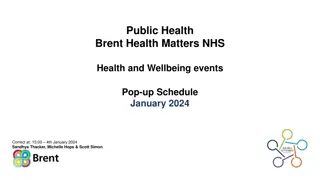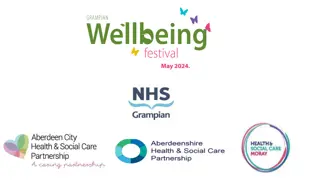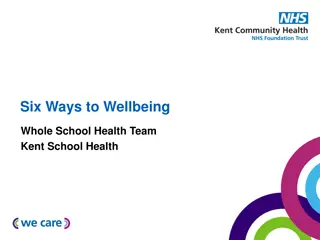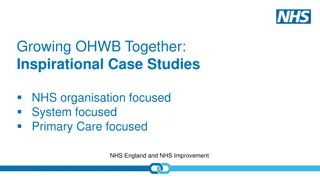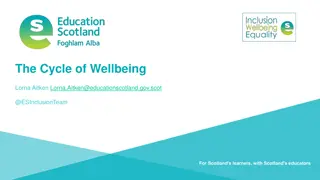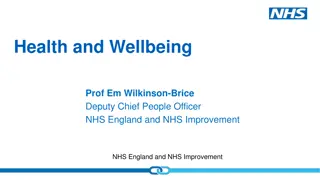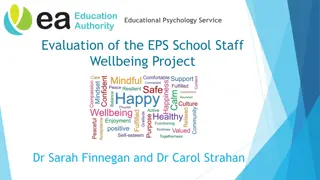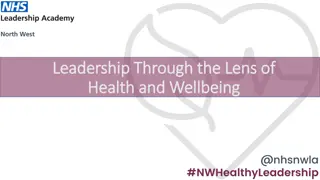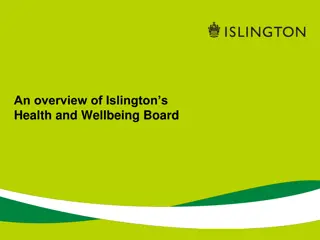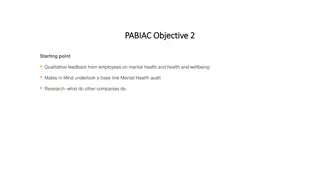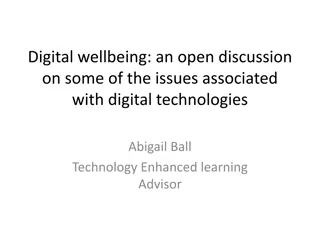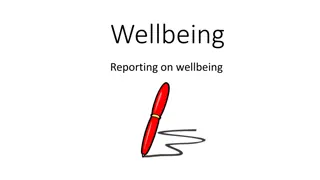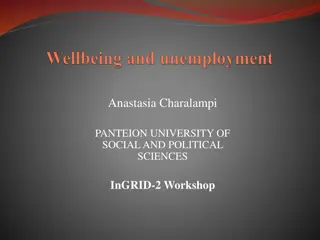February 2024 Health, Safety, and Wellbeing Update
This update includes critical risk statistics for February 2024, focusing on Traffic Management as the safety topic of the month. It emphasizes the importance of proper traffic management to ensure the safety of workers and road users in various work environments. The report highlights key measures such as exclusion zones, signage, and traffic management plans to prevent accidents and fatalities. Everyone is reminded of their responsibility to prioritize safety, identify risks, and implement necessary controls to mitigate potential hazards effectively.
Download Presentation

Please find below an Image/Link to download the presentation.
The content on the website is provided AS IS for your information and personal use only. It may not be sold, licensed, or shared on other websites without obtaining consent from the author.If you encounter any issues during the download, it is possible that the publisher has removed the file from their server.
You are allowed to download the files provided on this website for personal or commercial use, subject to the condition that they are used lawfully. All files are the property of their respective owners.
The content on the website is provided AS IS for your information and personal use only. It may not be sold, licensed, or shared on other websites without obtaining consent from the author.
E N D
Presentation Transcript
Health, Safety and Wellbeing Update February 2024
Contents 1. Critical Risk Stats 2. Safety topic of the month 3. Wellbeing 4. WorkSafe updates
Critical Risk Stats - February Top Critical Risk Reports - January 2024 18 In January there were 43 reported critical risk related incidents, this is the same as December (43) and a decrease from January 2023 (66) 16 16 14 12 10 10 Vehicles/Mobile Equipment is our highest reported critical risk this month with 16 reports, followed by Traffic/Pedestrian Movement at 10 reports. 9 8 6 5 4 3 2 0 Hazardous Substance/Chemical Work at Height/Dropped Objects Working near/with services Traffic/Pedestrian Movement Vehicles/Mobile Equipment
Safety topic of the month Traffic Management
Topic of the month Traffic Management Traffic management is essential to control all traffic, cyclists and pedestrians safely, and to prevent serious harm or fatalities to our workers and other road users.
Topic of the month Traffic Management When we working in and around live traffic, we need to: Implement and manage exclusion zones Ensure pedestrians are isolated from traffic and mobile equipment Signage and markings but be visible and clearly demarcate pedestrians and vehicles Lateral and longitudinal safety zones and tapers must have no working vehicles or workers in them at all times Temporary traffic management Where people are working in the road corridor there must be an approved Traffic Management Plan (TMP) in place. Traffic management is not just when we are working on the road, it relates to all traffic movements on any, and all worksites including yards, depots and greenfield sites away from public roads. Consider traffic movements and flow, cyclists, parking and other activities like refuelling Ensure workers are trained and competent, and TTM equipment is fit for purpose and compliant
Topic of the month Traffic Management Everyone is responsible for safety Everyone has obligations to both workers and road users. Everyone gets the highest level of protection reasonably practicable. Everyone needs to proactively identify risk and put in place controls to eliminate or minimise the risks as far as reasonably practicable.
Topic of the month Traffic Management We are always restrained when working from the back of a truck We always have a spotter We always have a safety zone We always separate people from plant We always have an effective plan in place For more information check out the New Zealand guide to temporary traffic management here
WorkSafe Updates Worker nearly buried alive in trench collapse A worker was in a 3m x 2m trench when one of the sides gave way, engulfing the worker up to his head. The worker suffered a collapsed lung, broken rib cage, a broken sternum and broken collar bone. He now lives with post-traumatic stress disorder from the incident. The trench had been built with a flat floor and steep vertical sides, rather than shored up with shields or battered into a safe slope to keep the sides stable. There had also not been any geotechnical assessment of the site to check the soil stability before work began. Anyone digging such a deep trench should be aware of the possibility of collapse and should take proper precautions. We know how to dig trenches safely it s not hard to take the necessary safety measures See other WorkSafe updates here
News from around the world Kettering General Hospital NHS Foundation Trust has been fined after an employee was found unconscious in a manhole The worker was rescued and treated but suffered a traumatic brain injury and has ongoing problems with memory loss and nerve damage An investigation found the manhole was not identified as a confined space, therefore there was a failure to properly risk assess the task. The investigation also highlighted that no confined space training was given to workers The trust failed to prevent entry of employees into confined spaces at the site which was custom and practice for a number of years. The trust also failed to identify a safe system of work or method statement for clearing blocked drains and no precautions were identified to reduce the risk of injury.



